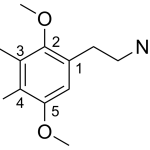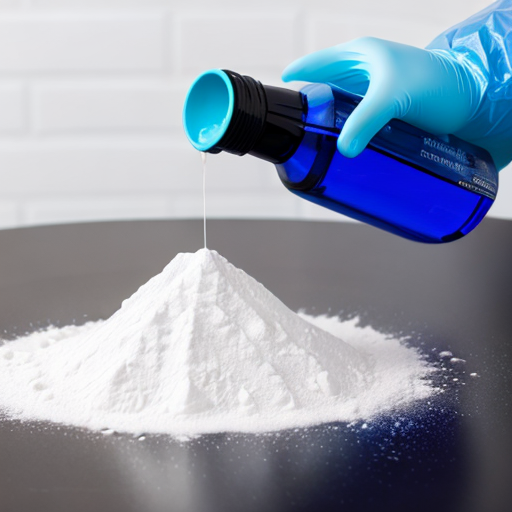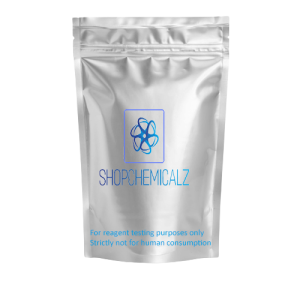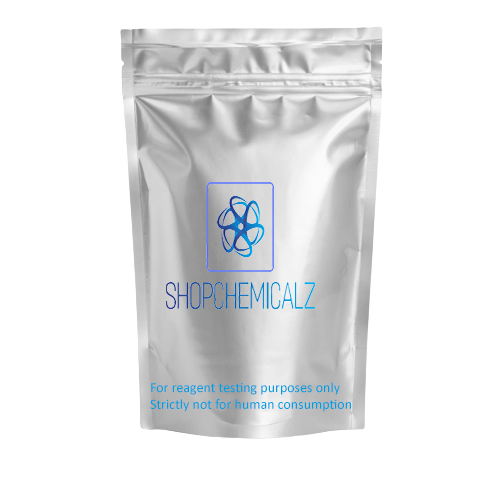2-fdck’s emergence in the party scene
2-fdck, or 2-Fluorodeschloroketamine, is a relatively new psychoactive substance that has recently emerged in the party scene. Although the rise of 2-fdck is recent, it was first synthesized in the 1950s, and its use as a recreational drug has only gained popularity in recent years.
This dissociative anesthetic drug is structurally similar to ketamine and has been found to have similar effects on users. It produces feelings of euphoria, relaxation, and dissociation from reality. It can also cause hallucinations and delusions at higher doses.
However, there are concerns about the safety of using this drug recreationally. It is not approved for medical use and there is limited research on its long-term effects on human health. Additionally, it may be difficult to accurately dose without proper equipment or knowledge which could lead to accidental overdose or other adverse reactions.
Despite these concerns, 2-fdck’s emergence in the party scene shows no signs of slowing down as its availability increases online and at underground parties. As with any recreational drug use, caution should be exercised when considering trying it out for yourself.
The Science Behind 2-fdck:
2-fdck, also known as 2-Fluorodeschloroketamine, is a popular research chemical that has gained popularity in recent years due to its similarities with ketamine. Like ketamine, 2-fdck is a dissociative anesthetic that can produce feelings of euphoria and disconnection from reality when ingested. However, the effects of 2-fdck are much less intense compared to ketamine, making it a more desirable option for recreational use.
The science behind 2-fdck involves its ability to interact with various neurotransmitters in the brain. Specifically, it binds to NMDA receptors in the brain and inhibits glutamate activity. This leads to decreased sensory perception and heightened introspection. Additionally, 2-fdck also increases dopamine release which can contribute to its pleasurable effects.
While there is still much research needed on the long-term effects of using 2-fdck recreationally, early studies have shown promising results for potential therapeutic uses such as treatment for depression and anxiety disorders. Overall, the science behind this substance is complex but intriguing as researchers continue to explore its potential benefits and risks.
History and Chemical Makeup
2-fdck or 2-Fluorodeschloroketamine, a dissociative anesthetic drug that has gained popularity in the party scene in recent times, was first synthesized by David Nichols and his team of researchers at Purdue University in 1956. However, it did not gain much attention until the late 2010s when reports of its recreational use started emerging. It is worth noting that this drug is yet to receive approval from any regulatory body for human consumption.
Chemically, 2-fdck belongs to the arylcyclohexylamine class of drugs and shares structural similarities with ketamine. Like ketamine, it works by blocking NMDA receptors in the brain leading to dissociation and altered perception among other effects. However, some users suggest that 2-fdck may be less potent than ketamine but longer-lasting.
Despite limited data on its pharmacology and safety profile, some people continue to experiment with this drug recreationally due to its legality (in some countries) and available through online vendors. This trend highlights the need for more research into new psychoactive substances like 2-fdck as well as increased public education on their risks and potential harms.
2-fdck’s Effects:
2-fdck is a dissociative anesthetic drug that has become increasingly popular in recent years. Its effects on the body are similar to those of ketamine, but with some subtle differences. When taken in small doses, 2-fdck can produce a mild euphoria and feelings of detachment from reality. It can also cause mild visual and auditory hallucinations.
In higher doses, however, the effects of 2-fdck can be much more intense. Users may experience complete disassociation from their surroundings and physical body, leading to what is commonly referred to as a “k-hole.” Despite being classified as a research chemical and illegal for human consumption in many countries, 2-fdck has become widely available on the black market and is often used recreationally at parties or music festivals.
While some users report positive experiences with 2-fdck, others have reported negative side effects such as anxiety, paranoia, and confusion. Additionally, the long-term effects of using this drug are largely unknown due to its relatively recent emergence onto the party scene. As with any substance use, caution should be exercised when considering taking 2-fdck.
Similarities and Differences to Ketamine
2-fdck or 2-Fluorodeschloroketamine is a dissociative anesthetic drug that has recently gained popularity among party-goers and drug enthusiasts alike. Its effects are often compared to the better-known anesthetic, ketamine. However, there are several similarities and differences between these two drugs.
One of the primary similarities between 2-fdck and ketamine is their ability to induce a state of dissociation in users. Both drugs produce similar sensations of detachment from one’s surroundings and can lead to hallucinations and altered perceptions of reality. Additionally, both 2-fdck and ketamine have been used for medical purposes as an anesthetic during surgeries.
Despite the similarities between these two drugs, there are also some notable differences. For instance, while ketamine has been extensively studied for its medical properties, little research has been conducted on the long-term effects of 2-fdck use. Moreover, 2-fdck appears to be less potent than ketamine but lasts longer when consumed orally or nasally. Overall, it is essential to note that both drugs can be dangerous when misused or abused and should only be taken under medical supervision or in controlled settings by responsible adults who understand their risks.
Popularity of 2-fdck:
2-fdck, or 2-Fluorodeschloroketamine, is a dissociative anesthetic drug that has been gaining popularity in the party and rave scene. It belongs to the ketamine family and has similar effects on the body as its predecessor. The drug produces a dissociative feeling, which can cause users to feel detached from their surroundings and experience hallucinations.
One reason for the rise of 2-fdck’s popularity is its availability online through various marketplaces. The drug is sold as a research chemical or legal high in powder form, making it easily accessible to anyone who wants to try it. Additionally, some people may prefer 2-fdck over ketamine due to its longer-lasting effects and milder comedown.
However, it’s important to note that 2-fdck has not been approved for human consumption by any regulatory agency. Its long-term effects on health are unknown, and there have been reports of adverse reactions such as nausea, vomiting, paranoia, and seizures among users. As with any drug use, caution should be exercised when taking 2-fdck and it should only be consumed under medical supervision.
Why It’s Gaining Traction in the Party Scene
2-fdck is a research chemical that is gaining popularity in the party scene. People are taking it for its dissociative effects which can cause hallucinations and euphoria. The drug first gained attention in research labs, where it was being studied as a potential treatment for depression and anxiety.
However, due to its psychoactive properties, people started using it recreationally. It has become an alternative to other popular party drugs like ketamine and MDMA. Unlike these drugs, 2-fdck does not leave users with a hangover or feelings of depression after use.
Moreover, 2-fdck has become more accessible to users thanks to online marketplaces which it can be purchased easily. Its affordability compared to other party drugs is also another reason why it’s gaining traction in the party scene. Despite concerns over its long-term effects on health, people are still drawn to the euphoric experiences brought on by this new party sensation.
Safety Concerns:
2-fdck, also known as 2-Fluorodeschloroketamine, is a synthetic dissociative drug that has gained popularity in both research laboratories and party scenes. However, the rise of this substance has raised concerns about its safety and potential risks for users.
One major concern is the lack of research on its long-term effects on health. As with any new drug, there is limited information available regarding its impact on the body over time. Additionally, there have been reports of adverse side effects such as nausea, vomiting, seizures, and even death in some cases.
Another issue with 2-fdck is that it can be easily mistaken for other substances due to its similar appearance to ketamine. This can lead to accidental overdoses or incorrect dosages being administered. It is important for users to be aware of these risks and take precautions when using 2-fdck or any other drugs.
Potential Risks and Side Effects
While 2-fdck is a relatively new drug, there are already some potential risks and side effects associated with its use. One major concern is that it has not yet been approved by any regulatory agencies for medical or recreational use. As such, the long-term effects of 2-fdck on human health are largely unknown. This means that people who take the drug are essentially acting as guinea pigs in an uncontrolled experiment.
Another issue with 2-fdck is that it can be very potent in small doses, which increases the risk of overdose. Even experienced drug users may have difficulty accurately dosing themselves, especially if they obtain the substance from an unreliable source. Overdosing on 2-fdck can lead to seizures, respiratory depression, and even death.
Finally, there is also a risk of addiction associated with 2-fdck use. Like many other drugs in its class (including ketamine), it can be highly addictive and difficult to quit once someone becomes dependent on it. This can cause serious problems for both physical and mental health over time if left unchecked.
Legal Status of 2-fdck:
2-fdck, also known as 2-Fluorodeschloroketamine, is a synthetic dissociative drug that has gained popularity in the party scene. However, its legal status remains unclear in many countries. In the United States, for example, it is not specifically listed as a controlled substance under federal law but may be considered an analog of ketamine and therefore subject to regulation.
In Europe, several countries have taken steps to regulate or ban 2-fdck. In the Netherlands, it was added to their list of controlled substances in 2020. Similarly, Sweden has classified it as a hazardous substance and prohibited its sale and use. Other countries such as Canada and Australia have not yet regulated 2-fdck but are monitoring its use closely.
It is important to note that even if a substance like 2-fdck is not specifically banned or regulated in one’s country of residence or travel destination, possession and distribution may still be illegal under other laws such as those governing prescription drugs or dangerous substances. It is always important to research local laws and regulations before using any new substance.
Regulations and Restrictions
Despite its popularity, the use of 2-fdck or 2-Fluorodeschloroketamine is illegal in many countries worldwide. The drug’s chemical structure closely resembles that of ketamine, a Schedule III controlled substance under the United States’ Controlled Substances Act. As a result, many countries have banned its use and distribution due to concerns about its safety and potential for abuse.
In some jurisdictions where 2-fdck is not explicitly prohibited by law, authorities may still take action against its use or possession under analog laws. Analog laws allow governments to ban substances that are structurally similar to those already deemed illegal. This means that even if 2-fdck itself is not specifically named in the law, it can still be considered illegal if it is chemically similar enough to another banned substance.
Overall, regulations and restrictions on the use of 2-fdck vary depending on location and jurisdiction. Regardless of legal status, users should be aware of the potential risks associated with using any untested research chemical without proper medical supervision or guidance from a qualified professional.
Conclusion: The Future of 2-fdck in the Party Scene
In conclusion, the future of 2-fdck in the party scene remains uncertain. While its popularity has grown exponentially in recent years, concerns about its safety and legality persist. The fact that it is still a relatively new drug means that there is still much to be learned about its effects on the human body, both short-term and long-term.
On one hand, proponents of 2-fdck argue that it offers a safer alternative to other drugs commonly used in party settings, such as cocaine or MDMA. They claim that it produces similar euphoric effects without the harmful side effects associated with those other substances.
However, others remain skeptical and point out that little is known about the potential risks associated with the long-term use of 2-fdck. As such, it’s essential for individuals considering using this substance to carefully research its effects and weigh their options before making any decisions. Ultimately, only time will tell how significant a role 2-fdck will play in the party scene moving forward.

 BARBITURATE
BARBITURATE BENZODIAZEPINES
BENZODIAZEPINES PSYCHEDELICS
PSYCHEDELICS STIMULANTS
STIMULANTS

